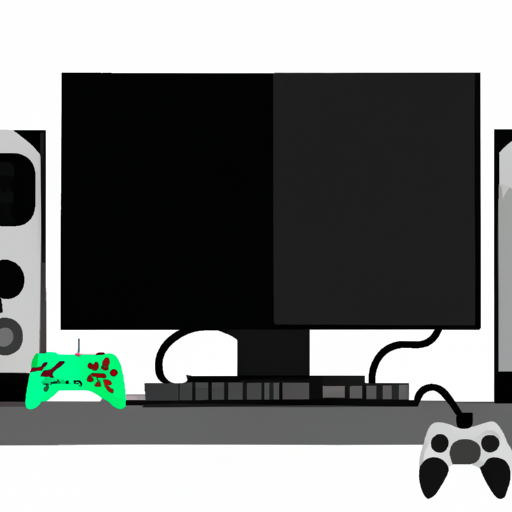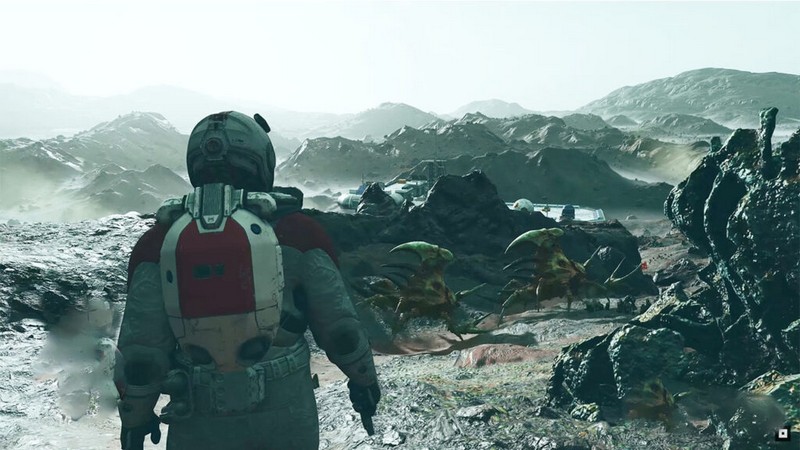Graphics cards are essential components of a computer system, as they are responsible for processing and displaying graphics. As such, it is important to ensure that the best possible graphics card is assigned to a game in order to maximize performance. This article will provide instructions on how to assign graphics cards to games in order to achieve optimal results.
First, the type and model of the available graphics cards must be determined. It is then necessary to check that all drivers associated with these devices are up-to-date. After this, users can proceed by finding the graphical settings offered by their game of choice and adjust them accordingly. Finally, testing should be done after making changes in order to assess the impact of assigning different graphics cards on overall performance.
Determine Your Graphics Card Type
Determining the type of video output device being used is essential for ensuring optimal performance when engaging in digital entertainment. Exploring hardware specifications and comparing models to determine the best performing graphics card can be a challenging task, depending on any number of factors such as brand, model, price range, and available features. A dedicated graphics card is typically recommended for gaming due to its ability to process data faster than an integrated GPU and should be considered if seeking higher frame rates or improved visuals.
To determine which graphic card is compatible with a given game, users must first consider what type of processor their current computer has. If it is an AMD processor then Radeon cards are preferable since they are specifically designed for use with this brand; however NVIDIA cards may also be compatible. Once compatibility has been established users can compare various models within the selected brand to identify one that meets both their needs and budget.
The final step in selecting a graphics card involves researching benchmark tests conducted by third-party sources as these can provide insight into how well each model performs in terms of frames per second (fps), resolution settings, etc. After evaluating all pertinent information regarding different models, users can make an informed decision about which graphics card will provide them with the best gaming experience possible.
Check Your Graphics Card Model
Understanding the model of one’s video device is a key factor in optimizing the performance of interactive software. To compare GPUs and check compatibility, one should first identify the graphics card type from its name or number. If it is not known, then it can be determined using system information tools such as Windows Device Manager, Mac System Profiler or Linux lspci command. Knowing the make and model of the graphics card will help to match with compatible games and drivers for optimal gaming experience.
Once the specific make and model are identified, users can search online to learn more about their GPU’s capabilities and compare with other cards on the market. This comparison will enable users to determine if their graphics card is capable enough to run modern games at higher settings or if they need an upgrade. Furthermore, researching specifications like core clock speeds, shader cores, memory size etc., will aid in understanding how much graphical power a particular game requires for running optimally.
Therefore, determining one’s graphic card type and model is essential before attempting to assign it to any game software application. Knowing these details helps users understand if their existing hardware is up-to-date enough for meeting gaming requirements or if a newer version must be purchased for better performance.
Make Sure Your Drivers Are Up to Date
Keeping one’s video device drivers current ensures the most efficient performance of interactive software. Driver optimization is essential for ensuring the compatibility and reliability of a system with its hardware or software components, as well as making sure that any new features are available to use. It is important to stay up-to-date with driver updates and software patches to prevent any potential errors from occurring when running games or other applications on a computer.
Updating graphics card drivers can be done either manually or automatically through the manufacturer’s website. It is recommended to use this method over third-party websites, as they may contain malicious files which could harm the system. If a game requires specific hardware requirements that exceed what is currently installed on the PC, it may not be able to run properly until an appropriate driver is installed.
Installing dedicated GPU drivers can also provide maximum graphical performance by allowing users to adjust their settings based on their preferences and needs. This includes setting custom resolutions and textures, enabling anti-aliasing effects, enabling higher frame rates and more advanced graphical effects, among others. Additionally, these drivers may include bug fixes and optimizations which can improve gaming performance significantly in certain cases.
Find the Game’s Graphics Settings
To maximize the visual experience of gaming, it is important to locate and modify the appropriate graphics settings. Understanding one’s hardware limitations and being able to troubleshoot any issues that arise while modifying the graphics settings can ensure that a user can gain the fullest potential from their system.
The process of finding and changing these settings will differ depending on which operating system is being used as well as which game engine is in use. Most modern games will have graphics options located within the main menu or an options menu accessible directly from the start screen of the game itself. Typically, users can find all relevant graphical details such as resolution, texture quality, anti-aliasing, shadows and other post-processing effects here.
In some cases however, more advanced modifications may require users to access additional menus outside of those found in-game. For example, certain games may allow users to adjust further graphical details such as field of view (FOV) through configuration files or through command line arguments when launching them with specific executables or shortcuts tools like Steam launch options.
Test the Game with the New Graphics Card Settings
After adjusting the relevant settings to accommodate a new graphics card, it is important to test the performance of the system to ensure an optimal visual experience. To optimize performance, users should analyze results from both benchmark tests and in-game tests. Benchmark tests are designed to evaluate system performance across a variety of tasks, such as rendering 3D objects or calculating physics simulations. The results from these tests can be used as a baseline for comparing system performance over time. In addition, users should try playing games at different settings and observe how they affect frame rate, image quality, and other aspects of game play. This can help identify which settings are most suitable for the particular hardware being used.
To further refine their settings, gamers may also wish to use tools such as Fraps or MSI Afterburner to monitor their GPU usage during gameplay. By recording frames per second (FPS) information while running various graphical effects and settings, users can gain insight into what their hardware is capable of handling before making any adjustments. Additionally, some graphics cards have advanced control panels that allow users to adjust specific parameters such as anti-aliasing levels or texture filtering options on a per-game basis. Taking advantage of these features allows users to precisely tailor their gaming experience for each individual title they play.
Testing the new graphics card with multiple games helps confirm that it is functioning properly and ensures that all settings are optimized for best performance without sacrificing visual quality or introducing unwanted artifacts into rendered images. If desired, more comprehensive testing can be conducted by performing stress tests with specialized software applications like Furmark or Unigine HeavenBenchmark in order to push the hardware beyond its limits and assess its true capabilities under extreme loads.
Frequently Asked Questions
What is the best graphics card for gaming?
The best graphics card for gaming depends on a variety of factors, including budget and desired type of game. GPU benchmarking can help identify the best performance-to-price ratio when selecting a graphics card. For optimal visuals and performance, graphics optimization is essential in order to reduce strain on the system and select settings that favor higher frame rates or resolution, depending on the user’s preference.
How do I know if my graphics card is compatible with a game?
When determining whether a graphics card is compatible with a game, it is important to consider managing heat, as well as the specific graphics drivers. Heat management is essential in order to prevent hardware damage due to overheating. Additionally, graphics drivers must be up-to-date in order for the game and the graphics card to communicate properly. Checking the manufacturer’s website for compatibility information can also help ensure that a graphics card will function properly with a certain game.
How can I make sure my graphics card is running at optimal performance?
Optimizing the performance of a graphics card requires regularly updating its driver, as well as making sure it is being operated within its recommended parameters. Driver updates ensure that the card is up-to-date with the latest bug and security fixes, while also leveraging any performance enhancements or optimizations. It is important to note that high-end graphics cards are capable of pushing their limits in terms of power consumption and clock speed, however this can lead to increased heat output and potentially cause damage over time. Therefore, it is important to research the optimal settings for one’s specific graphics card before attempting such modifications.
Is it possible to increase the graphics settings of a game?
It is possible to increase the graphics settings of a game, however, this may come with added cost. Upgrading the software or hardware components associated with the graphics card can help optimize its performance and increase the quality of graphical output. This can be done by upgrading the video card drivers or updating the CPU or GPU itself. Furthermore, ensuring that all other components such as RAM and internal storage are also up to date can also contribute to improved graphics optimization.
Is it worth upgrading my graphics card for better gaming performance?
Upgrading one’s graphics card can be a beneficial investment for those who are looking to improve the gaming experience. GPU compatibility and video settings should be considered when assessing the necessity of an upgrade, as well as individual preferences such as budget and desired performance levels. An upgraded graphics card will enable higher video settings that may not have been achievable with the previous system, resulting in improved visuals and gameplay. Ultimately, whether or not an upgrade is worth it depends on several factors and should be judged on a case-by-case basis.
Conclusion
In order to assign a graphics card to a game, several steps must be taken. Firstly, determining the type of graphics card being used is essential in order to maximize the performance of any given game. Next, users should check their graphics card model and make sure that drivers are up-to-date. Afterward, accessing the game’s graphics settings will help customize the experience based on user preference. Lastly, testing out the new settings with the assigned graphics card will ensure smooth gaming performance. All in all, proper assignment of a dedicated graphics card is crucial for optimizing gaming experiences and guaranteeing maximum performance from any given title.











